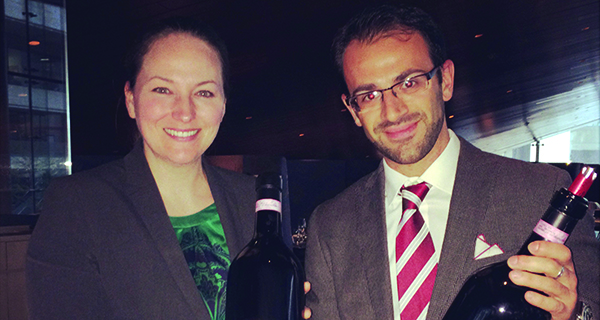
Italian wine has long delighted American diners, with Pinot Grigio and Prosecco being the most popular choice on the menu, followed by Moscato and Chianti. But new effervescence is bubbling in the “micro” segment of grape varieties from Italy – from the popular Etna wine from volcanic Sicily, to other southern grapes like Aglianico, Primitivo and Nero d’Avola – said Giuseppe LoCascio, outgoing VP Portfolio Management at Leonardo LoCascio Selections-LLS, the Italian wine imports arm of the Winebow Group, a leading US importer and distributor of fine wine and craft spirits.
Mr LoCascio, what are the top-selling Italian wines in the US?
If you look at the big numbers and scan data from the retail channel, Pinot Grigio, followed by Prosecco, is the most popular of Italian wines. Moscato follows with a more modest growth rate. The fourth place, still strong but slightly declining, is held by Chianti, followed by Chianti Classico, which has smaller numbers but is growing. Macro trends show Italian wine is doing well in the US. But some categories show some weakness, like Prosecco, except for the finest DOCG Valdobbiadene. Consumers see it as cheap champagne, as it can be found at a retail price of 15 dollars per bottle, and this is making it more difficult for small producers to survive in the market.

What is the evolution of the “micro” trend of regional varietals?
The discovery trend started around a decade ago. There is growing professionalism in those who sell wine. Now there are professional sales managers, formed in the wine industry, who don’t come from other sectors. It is very positive for wine distributors to have a counterpart who knows what importers need.More than with consumers, this segment works with very sophisticated buyers, who have become more and more knowledgeable. Whoever sells fine wines, whose average retail price is above 15 dollars, has fine buyers, sommeliers and store managers as interlocutors. Consumers are evolving, especially in metropolitan cities, and travel a lot. Large retail chains like Kroger, Publix – let alone specialized stores like Dean & De Luca and Bonitalia – started 15 years ago to open to regional markets.
 Wine has long been part of your family. What is the most important teaching when it comes to manage a portfolio?
Wine has long been part of your family. What is the most important teaching when it comes to manage a portfolio?
The main principles of when my uncle founded the company have not changed: first, working with family-owned companies, where the family must be involved in the daily activity. Second, they must represent something for the history and the future of wine making in their region. Third, the balance between quality and price. This doesn’t mean that they must be cheap, but that even if you pay 300 dollars for a bottle, there must be history behind it, not only marketing.
What are the challenges for niche Italian wine makers?
One negative thing is a problem of size, which may not be enough for the US market. Many companies are too small, don’t have enough resources to enter this market. Learning to use EU funds has helped the sector. Also, winemakers face a different regulation in the US when it comes to distribution. In states like New York you cannot discriminate between distributing to retailers or restaurants. The product must be made available to all.
WINEBOW – LoCascio – who was preparing to leave LLS at the time of the interview – has wine running in the family. His uncle Leonardo, a passionate entrepreneur now retired, founded Winebow and LLS 36 years ago, merging them in 2014 with The Vintner Group to create the Winebow Group. LoCascio said general sales of Italian wine in the United States are growing, with the “micro” segment of regional specialties benefiting from a more professional sales force and sophisticated buyers.
LOCASCIO SELECTIONS – Exports of Italian wine are set for another positive year in 2016, after growing 3% in the first quarter to 1.23 billion euros from a year before, according to Istat data elaborated by Ismea for Osservatorio del Vino. The United States is the largest importer of Italian wine, with 330 million euros of sales, a 5% increase from the same period of 2015. Known for its eponymous “gold seal” on the back label of the wines in its portfolio, LoCascio Selections represents around 60 wineries throughout Italy. One of the first companies to bring fine Italian wines to the US in the 1980s, LLS is one of the three importers owned by The Winebow Group, alongside Craft + Estate, specialized in distillers, craft spirits and artisanal sakes, and MundoVino, which imports from Argentina, Chile, Spain and Portugal. The Winebow Group, which makes around 750 million dollars of annual revenues, also owns a distribution network that serves nearly half of the wine consumption in the US and generates around 60% of the group’s turnover.

